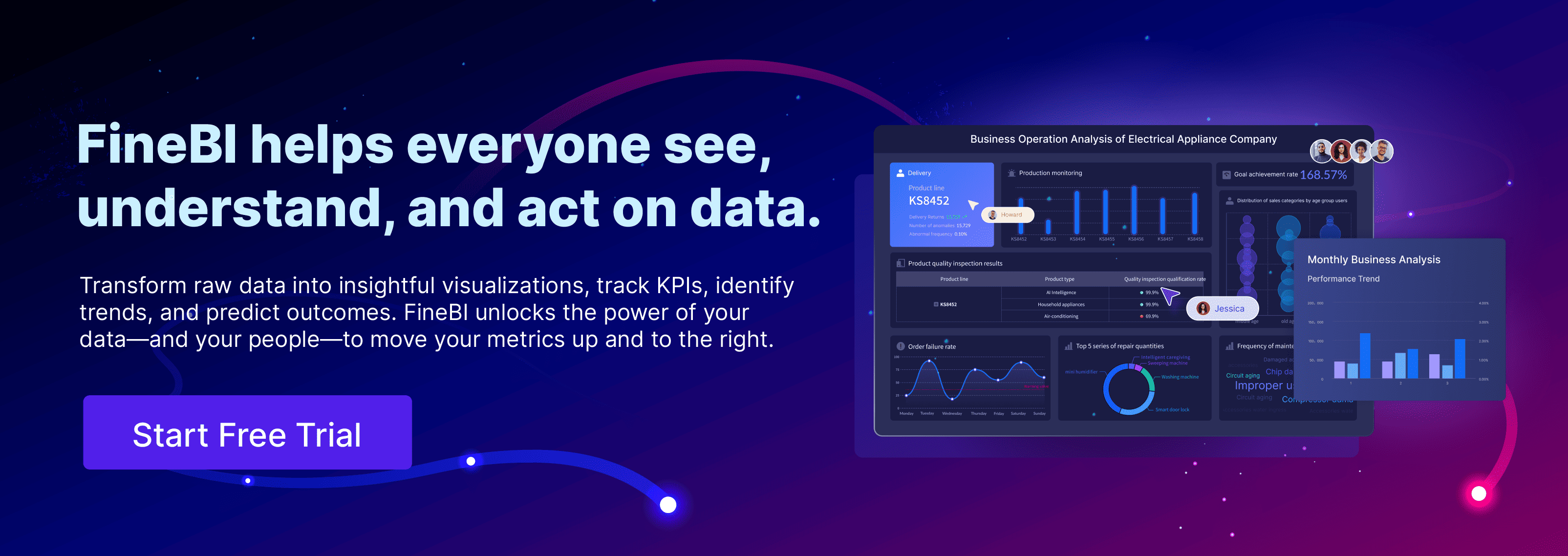A customer experience dashboard gives you a clear view of how customers interact with your business. You can track satisfaction, spot issues, and see trends in real time. This dashboard helps you focus on what matters by filtering out distractions. With tools like FineBI from FanRuan, you can easily create dashboards that present the right data for your role and improve your experience at work.

Customer Experience Dashboard Basics
Definition
A customer experience dashboard is a strategic tool that brings together different types of data about your customers. You use it to see how customers interact with your business at every stage. Industry experts describe a customer experience dashboard as more than just a reporting tool. It combines metrics like Voice of the Customer, business results, and operational data. This integration gives you a complete view of the customer journey. You can spot pain points, find new opportunities, and encourage teams to work together. The dashboard helps you shift your focus from products to what your customers actually need. When you use a customer experience dashboard, you make your business more customer-centric.
Note: A well-designed customer experience dashboard involves input from different teams. You build it step by step, making sure it matches both your business goals and your customers’ expectations.
How It Works
A customer experience dashboard works by pulling data from many sources and showing it in one place. You connect the dashboard to tools like social media, email, chat logs, surveys, and website analytics. You also include data from call centers, news, review sites, and purchase history. This wide range of sources helps you understand customer sentiment, behavior, and feedback.
You often use AI tools, such as sentiment analysis and text analytics, to make sense of large amounts of data. The dashboard displays results like customer emotions, trends over time, and reactions to specific features. You can compare current data with past results to see if your changes improve the customer experience.
Tip: When you look at customer experience dashboard examples, you will notice that the best dashboards show both big trends and small details. They help you see what is working and what needs attention.
You use the dashboard to improve satisfaction, update your products, and adjust your marketing. By having all this information in one place, you make better decisions and create a stronger connection with your customers.
Why Customer Experience Dashboard Matters
Impact on Customer Satisfaction
You want your customers to feel valued and satisfied. Customer experience dashboards give you the tools to make this happen. You can monitor key metrics like retention, support response times, onboarding progress, and upsell opportunities. When you track these areas, you see where customers struggle and where they are happy.
- Lowe’s used customer experience dashboards with predictive analytics to optimize product assortment and staffing. By analyzing customer feedback and behavior, they improved sales and made sure the right products were available at the right locations.
- Uber used real-time data dashboards to monitor traffic, driver availability, and demand. This allowed them to adjust pricing, reduce wait times, and improve profitability, which led to higher customer satisfaction.
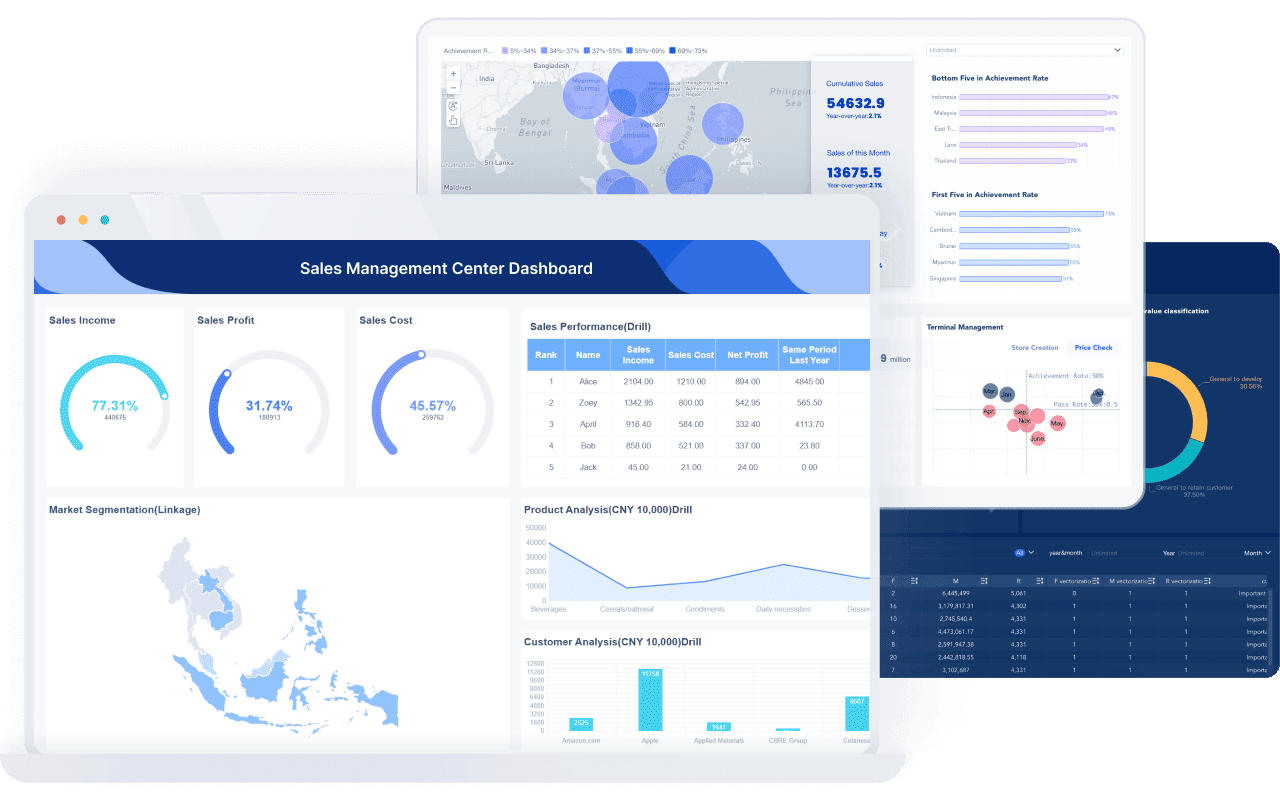
You can see similar results in your own business. A 5% increase in customer retention, identified through dashboards, can lead to a 25% increase in profitability. When you track support response and resolution times, you address issues quickly and build loyalty. Monitoring onboarding helps you spot where customers need help, so you can reduce churn. Dashboards also reveal upsell opportunities, which increase account value and customer lifetime value.
Companies like GoDaddy, Intercom, and Contentsquare use dashboards to track Net Promoter Score (NPS), Customer Satisfaction Score (CSAT), first response times, and feature adoption. These metrics help them improve customer experience and satisfaction. AI-powered analytics and self-serve reporting in dashboards speed up decision-making and responsiveness, making customers feel heard and valued.
Note: Real-time insights and predictive analytics in dashboards let you anticipate churn, customize outreach, and engage customers before problems grow.
Data-Driven Decisions
You make better decisions when you have the right information at your fingertips. Customer experience dashboards bring together data from many sources and show it in easy-to-understand visuals. You can track KPIs, spot trends, and identify customer issues quickly.
- You consolidate customer data into visual dashboards with graphs, charts, and text. This helps you see trends and expectations.
- You monitor satisfaction, loyalty, and customer effort with dashboards like CSAT, NPS, and CES.
- Real-time data and automated alerts make sure your team gets critical information fast, reducing silos.
- You set clear benchmarks and goals, create automatic data feeds, and train your team to use dashboards effectively.
- Companies report improved engagement, satisfaction, loyalty, streamlined operations, and increased revenue after using real-time analytics in dashboards.
Customer experience dashboards support measurable business outcomes. You can focus on KPIs like Customer Lifetime Value, Retention Rate, and Net Promoter Score. These dashboards help you define clear goals, such as retaining 90% of top customers or acquiring 50 new customers with a set order value. You track progress and measure your team’s contribution to business results.
Dashboards also help you identify opportunities for process and product improvements. You simplify large data sets, provide clarity, and generate clear reports that align with your goals. You can track and visualize customer journeys to understand how customers interact with your products or services.
When you use customer experience dashboard examples, you see how leading companies use data to drive decisions and achieve real results.
Key Metrics in Customer Experience Dashboard
Loyalty and Retention
Customer loyalty and retention show how well you keep your customers coming back. You want to know if customers stay with your business or leave for competitors. Key metrics include NPS, churn rate, and annual retention rate. NPS above 30 in the SaaS industry signals strong loyalty, while scores above 50 are outstanding. Monthly churn rate below 5% means you lose fewer customers each month. Annual retention rate above 90% shows you keep most of your customers year after year.
| Metric | Benchmark Value | Explanation / Example |
|---|---|---|
| Net Promoter Score (NPS) | Above 30 (SaaS industry) | Scores above 50 indicate outstanding loyalty. Example: 70% promoters, 10% detractors = NPS of 60. |
| Monthly Churn Rate | Below 5% | Losing 50 customers out of 1,000 results in 5% churn. Lower churn improves profitability. |
| Annual Retention Rate | Above 90% | Retaining 4,800 out of 5,000 customers yields 96% retention, signaling strong loyalty. |
You can also track Customer Lifetime Value (CLV) to see how much revenue a customer brings over time. High CLV means customers stay longer and spend more. When you benchmark these metrics, you find gaps and discover ways to improve customer retention and loyalty.
Engagement Metrics
Engagement metrics help you understand how customers interact with your business. You want to know if customers use your products, visit your website, or respond to your campaigns. Important metrics include average session duration, bounce rate, pages per session, and conversion rate. Longer session duration means customers find your content valuable. Low bounce rate shows customers stay and explore more pages. High conversion rate means customers complete actions, such as signing up or making a purchase.
You should also track social media engagement, such as likes, shares, comments, and follower growth. These numbers show how customers connect with your brand online. Customer satisfaction metrics like CSAT and CES link closely to engagement. When customers find it easy to use your services, they engage more and feel more satisfied. Tracking these metrics helps you improve customer experience and increase satisfaction.
Note: Monitoring engagement metrics lets you see what works and what needs attention. You can adjust your strategies to keep customers interested and happy.
Support and Feedback
You need to know what your customers think and how they feel about your business. A customer feedback dashboard gives you a clear view of all the feedback you receive from different channels. You can collect feedback from email surveys, app reviews, social media, and customer support interactions. This information helps you understand what customers like, what frustrates them, and where you can improve.
You can organize customer feedback into themes such as app usability, pricing, customer support, and product features. This makes it easier to spot patterns and recurring issues. When you use a dashboard, you can monitor feedback in real time. You see new comments as they come in, which lets you respond quickly and make immediate improvements.
Tip: Real-time monitoring of customer feedback helps you catch urgent issues before they grow into bigger problems.
A good customer feedback dashboard offers several features to help you analyze and act on feedback:
- Trend analysis to identify recurring issues and new patterns.
- Interactive text analysis for open-ended comments, so you can understand the reasons behind customer opinions.
- Closed-loop systems that let you review tagged feedback and track how you resolve each case.
- Filtering tools to prioritize urgent cases, such as unresolved complaints or requests for callbacks.
You can also use visual elements to make sense of large amounts of feedback. For example, bar charts show trends over time, pie charts display sentiment distribution, and heatmaps highlight recurring issues. These visuals help you see the big picture and focus on what matters most.
Here is a table that shows how you can organize and visualize customer support and feedback data:
| Aspect | Description |
|---|---|
| Feedback Sources | Email surveys, app reviews, social media, customer support interactions |
| Feedback Organization | Grouped into themes like App Usability, Pricing, Customer Support, Product Features |
| Key Metrics | NPS, CSAT, Sentiment Analysis, Feedback Count |
| Visualization Elements | Bar charts, pie charts, heatmaps |
| Dashboard Features | Filtering by customer segments, customizable date ranges, alert systems for significant changes |
You can also track support metrics such as ticket volume, average response time, and resolution rates. These numbers show how well your team handles customer issues. When you combine support data with feedback, you get a complete view of the customer experience.
Dashboards like Net Promoter Score, Voice of the Customer, and Customer Service dashboards help you track satisfaction and support quality. You can use these tools to guide improvements and make sure every customer feels heard.
Note: When you use a customer feedback dashboard, you create a closed feedback loop. You collect, analyze, act, and follow up—all in one place.
Features of FineBI for Customer Experience Dashboard
Data Integration
You need a dashboard that brings all your customer data together. FineBI makes this easy by connecting to over 30 big data platforms and SQL data sources. You can also use Excel files, multi-dimensional databases, and program datasets. With FineBI, you do not have to worry about messy or inconsistent data. The data development module lets you clean and standardize information from different business systems. You can use low-code visual tools to handle data preprocessing, so you get reliable results every time.
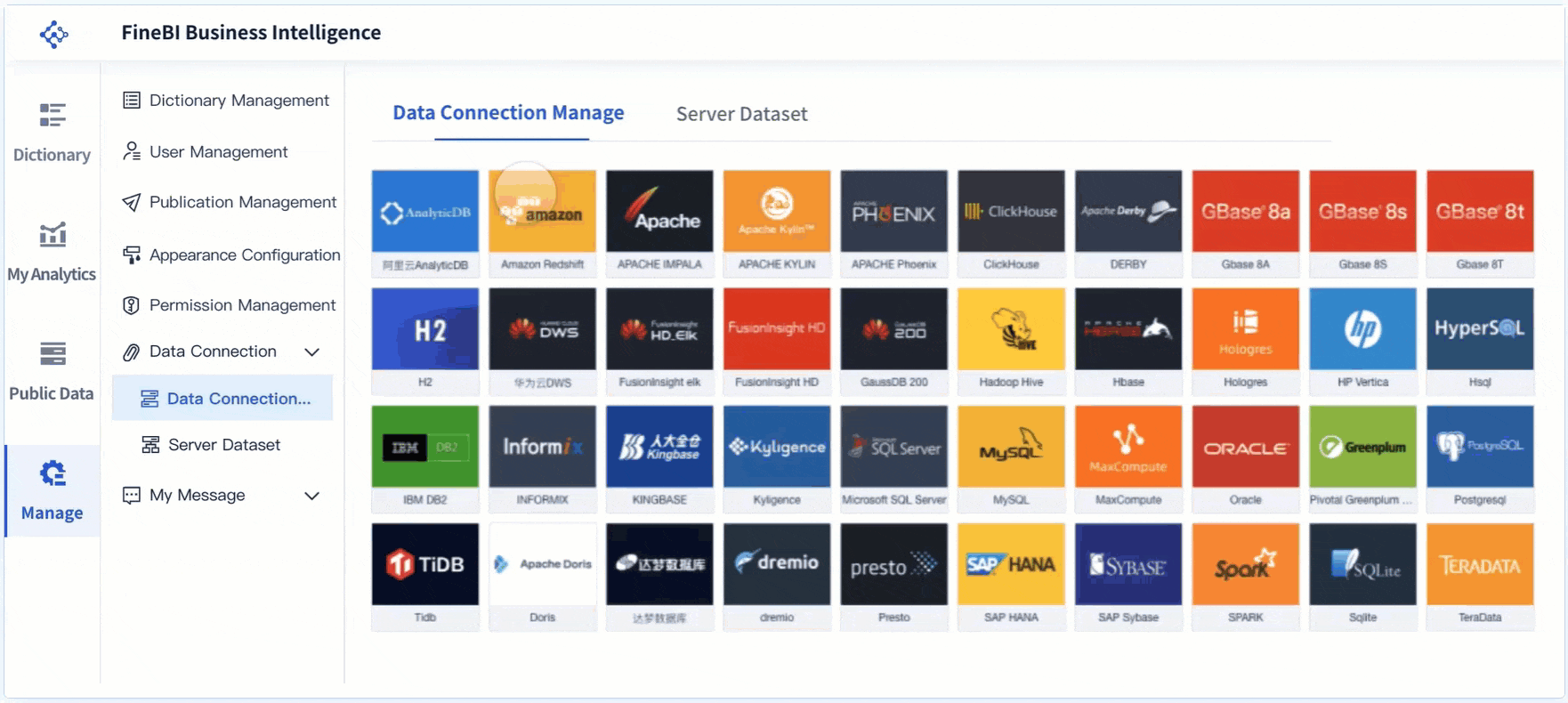
FineBI supports data synchronization, transformation, and SQL-based queries. You can schedule tasks to keep your dashboard updated with the latest information. Data modeling features let you define relationships in your data warehouse. This means you can analyze related datasets together without extra setup. FineBI also makes it simple to share data and dashboards with your team. You can use subject collaboration, public data sharing, and dashboard sharing to keep everyone on the same page.
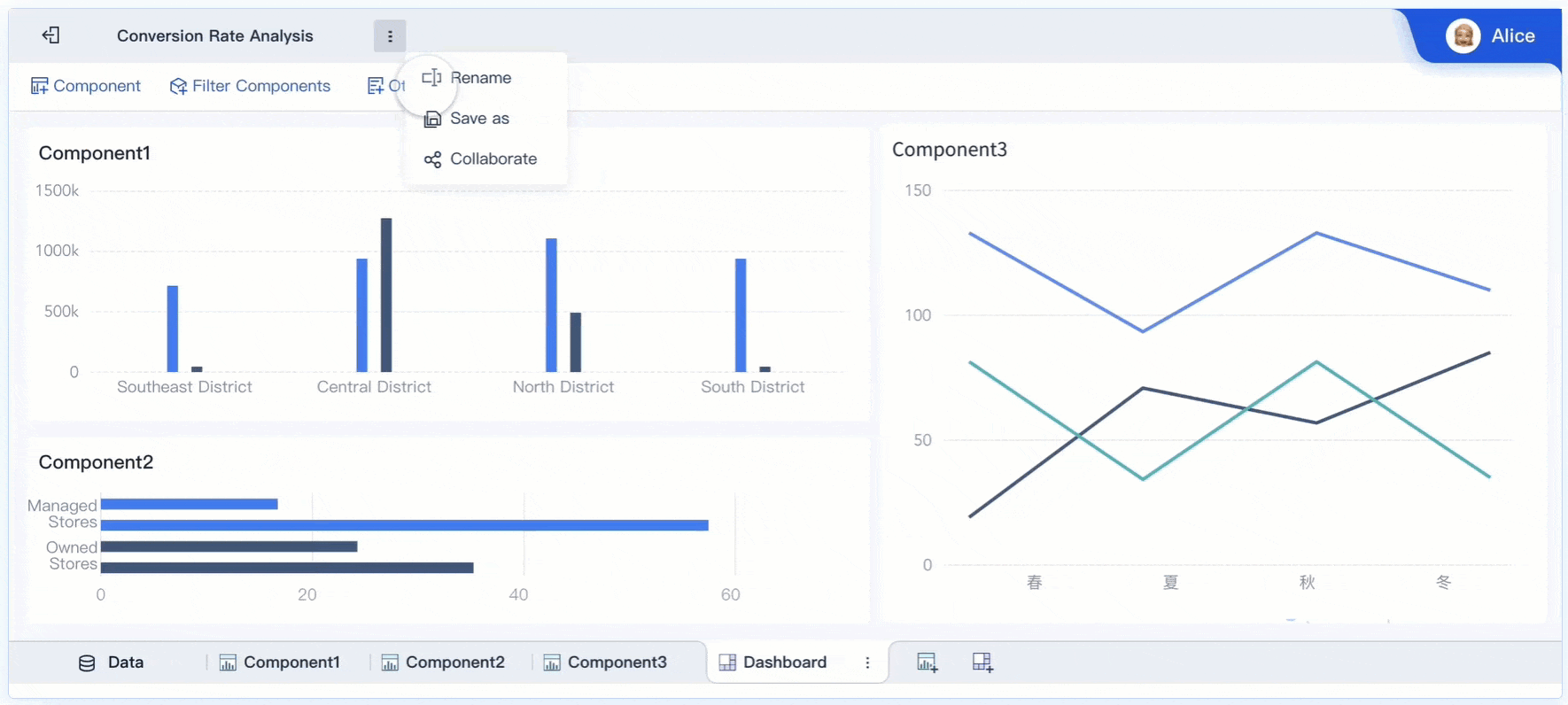
Tip: When you integrate all your data sources, you get a complete view of the customer journey. This helps you deliver a better experience at every touchpoint.
Real-Time Visualization
You want to see what is happening with your customers right now. FineBI gives you real-time visualization, so your dashboard always shows the latest data. You can make decisions quickly because you see changes as they happen. FineBI supports real-time calculation and analysis, which means your team always works with up-to-date information.
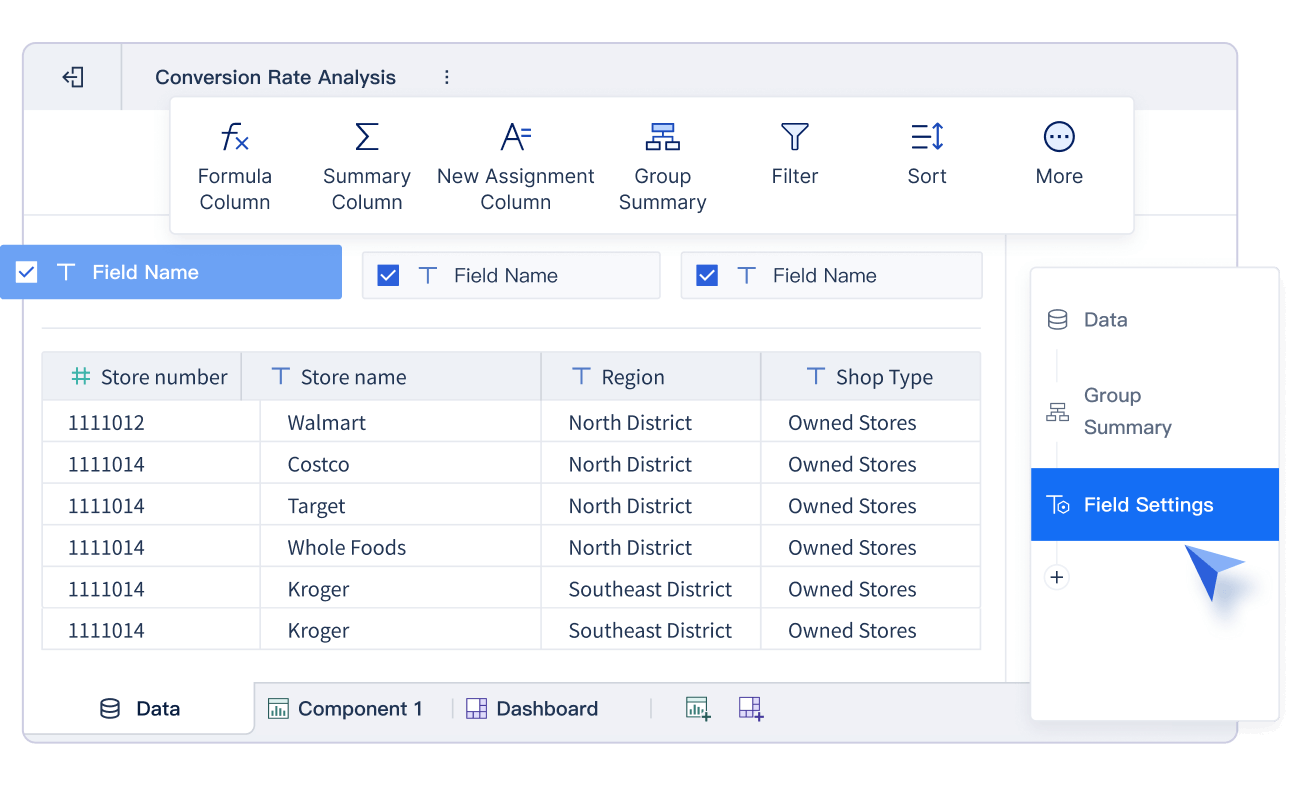
To set up real-time visualization, you install FineBI and connect it to your data sources. The system uses advanced technology to separate calculation and storage, which improves speed and stability. FineBI also allows you to customize your dashboards with advanced visualizations. You can create charts, graphs, and tables that fit your needs. Teams can edit dashboards together in real time, making collaboration easy. For example, companies like Kintetsu use FineBI to manage customer information and provide real-time dashboards for customer experience analytics.
- Real-time calculation and analysis
- Advanced data visualization and customization
- Real-time collaboration and editing
- Stable and scalable performance
When you use FineBI, you always know how your customers feel and what they need. This helps you improve the customer experience and respond to issues before they grow.
Self-Service Analytics
You do not need to be a data expert to use FineBI. The platform offers self-service analytics, so you can explore data and build dashboards on your own. FineBI’s self-service dataset module lets you group, calculate, join, and combine data from different tables. You can sort, filter, rename fields, and drag-and-drop columns to organize your data. These features make it easy to find insights and answer questions about your customer experience.
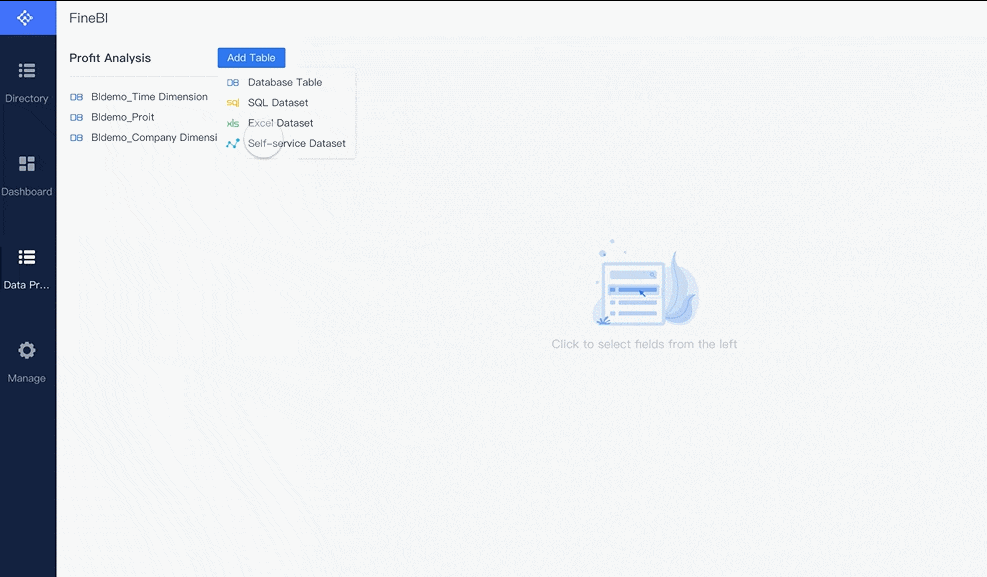
FineBI also helps you identify key factors that influence your metrics. Intelligent multidimensional data explanation points out what drives changes in your indicators. You can set up data alerts to get notified when something unusual happens. The Data Portal plugin gives you a single place to find all your reports and announcements, saving you time.
Collaboration is simple with FineBI. You can share dashboards, edit them with your team, and publish your findings to public data repositories. You control who can see your dashboards and set expiration dates for shared links. This keeps your data secure while making teamwork easy.
Note: FineBI's self-service analytics empower you to take control of your customer experience data. You can act fast, find answers, and improve your business without waiting for IT support.
Collaboration Tools
You need strong collaboration tools to get the most out of your customer experience dashboards. FineBI gives you everything you need to work together with your team, no matter where you are. You can share dashboards, assign roles, and keep your data secure. These features help you make better decisions and respond faster to customer needs.
FineBI lets you share dashboards with just a few clicks. You can send a link to your teammates or publish dashboards to a shared workspace. You decide who can view, edit, or comment on each dashboard. This control keeps your information safe and ensures only the right people see sensitive data.
Tip: Use role-based permissions to give each team member the right level of access. For example, you can let managers edit dashboards while others only view them.
You can also work on dashboards together in real time. FineBI supports co-editing, so multiple users can make changes at the same time. You see updates instantly, which helps your team stay on the same page. This feature is great for brainstorming sessions or when you need to react quickly to new customer feedback.
FineBI includes built-in communication tools. You can leave comments on dashboards, tag teammates, and ask questions right inside the platform. This makes it easy to discuss insights and plan next steps without switching to email or chat apps.
Here is a table showing some key collaboration features in FineBI:
| Feature | What You Can Do | Benefit |
|---|---|---|
| Dashboard Sharing | Share dashboards with individuals or groups | Faster teamwork |
| Role-Based Permissions | Set who can view, edit, or comment | Data security |
| Real-Time Co-Editing | Work together on dashboards at the same time | Instant updates |
| In-Platform Comments | Leave notes and tag teammates | Better communication |
| Audit Logs | Track who made changes and when | Accountability and transparency |
You can also set expiration dates for shared dashboards. This means you control how long someone can access your data. FineBI keeps a record of all changes, so you always know who did what. This helps you maintain trust and transparency in your team.
Note: Strong collaboration tools help you break down silos. You can bring together marketing, sales, support, and product teams to improve the customer experience.
With FineBI, you empower your team to work smarter. You share insights, solve problems together, and keep everyone focused on your customers. These collaboration tools make your dashboards more valuable and your business more agile.
Best Practices for Customer Experience Dashboard
User Loyalty Analysis
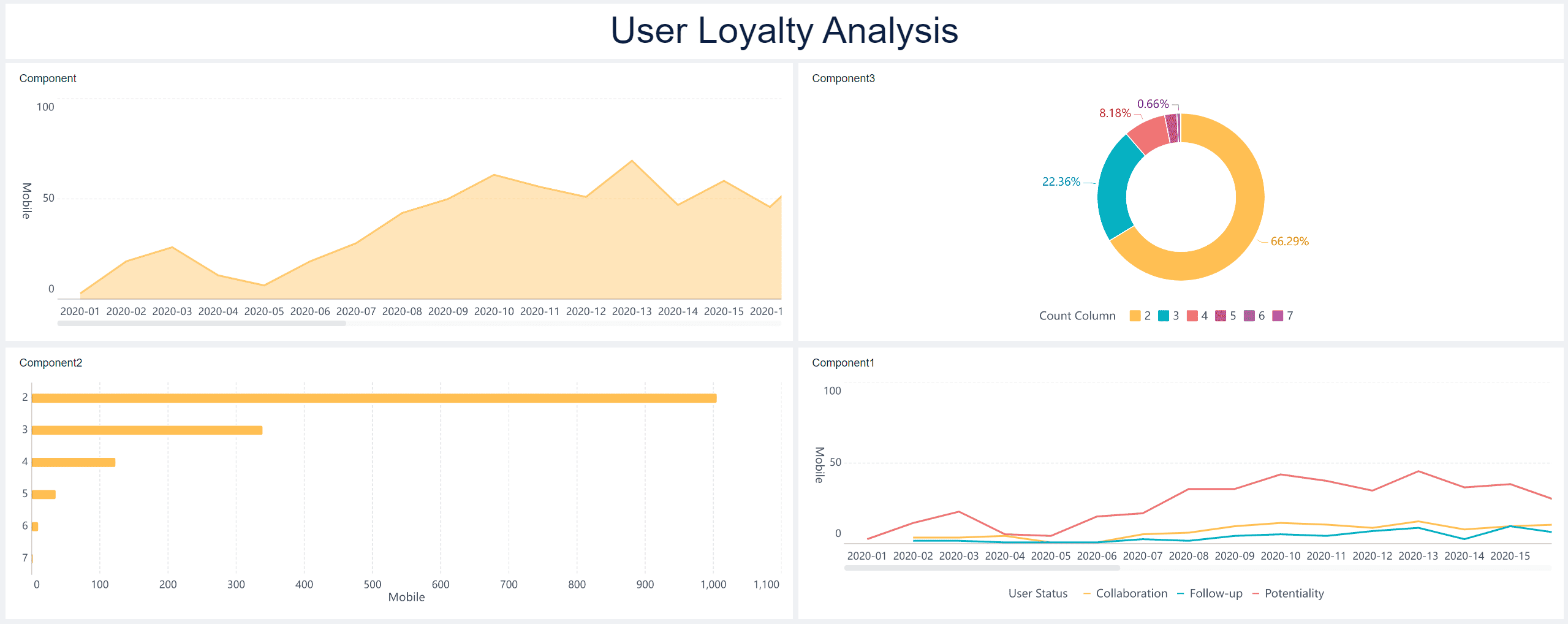
You can use your customer experience dashboard to analyze user loyalty in a structured way. Start by regularly updating and reviewing Net Promoter Score (NPS) data. This helps you spot changes in customer sentiment quickly. Segment your customer base by location, product usage, or type. This reveals specific pain points and strengths for each group.
Here are some best practices for analyzing user loyalty:
- Update and analyze NPS data often to catch shifts in loyalty.
- Segment customers to tailor your strategies and uncover hidden issues.
- Respond quickly to feedback, especially from detractors and promoters.
- Track NPS trends over time to see how your actions affect loyalty.
- Customize dashboard layouts to fit your team’s workflow and goals.
- Integrate your dashboard with CRM and support tools for a complete view.
- Use visual tools like bar charts and line graphs to spot trends fast.
- Link NPS responses to customer profiles for personal follow-up.
- Monitor survey participation rates to ensure reliable data.
- Compare NPS scores across platforms, such as your website and app.
Tip: When you act quickly on feedback, you can reduce churn and build stronger loyalty.
Retention Analysis

You need to understand why customers stay or leave. Start by collecting and segmenting customer data. Look at behavior patterns and use surveys to gather feedback. AI-powered tools can help you find common themes in customer comments. Digital behavior analytics, such as session replays and heatmaps, show you how customers move through your website or app.
Segmenting customers by demographics and behavior lets you target your retention efforts. Predictive analytics can identify customers at risk of leaving. Monitor key metrics like churn rate, customer lifetime value, and engagement scores. Combine these numbers with feedback from surveys and support tickets for a full picture.
You should also track product usage and customer journeys. Low engagement or drop-offs in funnels can signal potential churn. Calculate customer health scores based on how often and how deeply customers use your product. Use these scores to decide where to focus your marketing or support. Regular A/B testing on digital touchpoints helps you refine your approach and improve customer retention.
Note: Combining quantitative data with qualitative feedback gives you deeper insights and helps you make better decisions.
Customer Inflow and Outflow Analysis
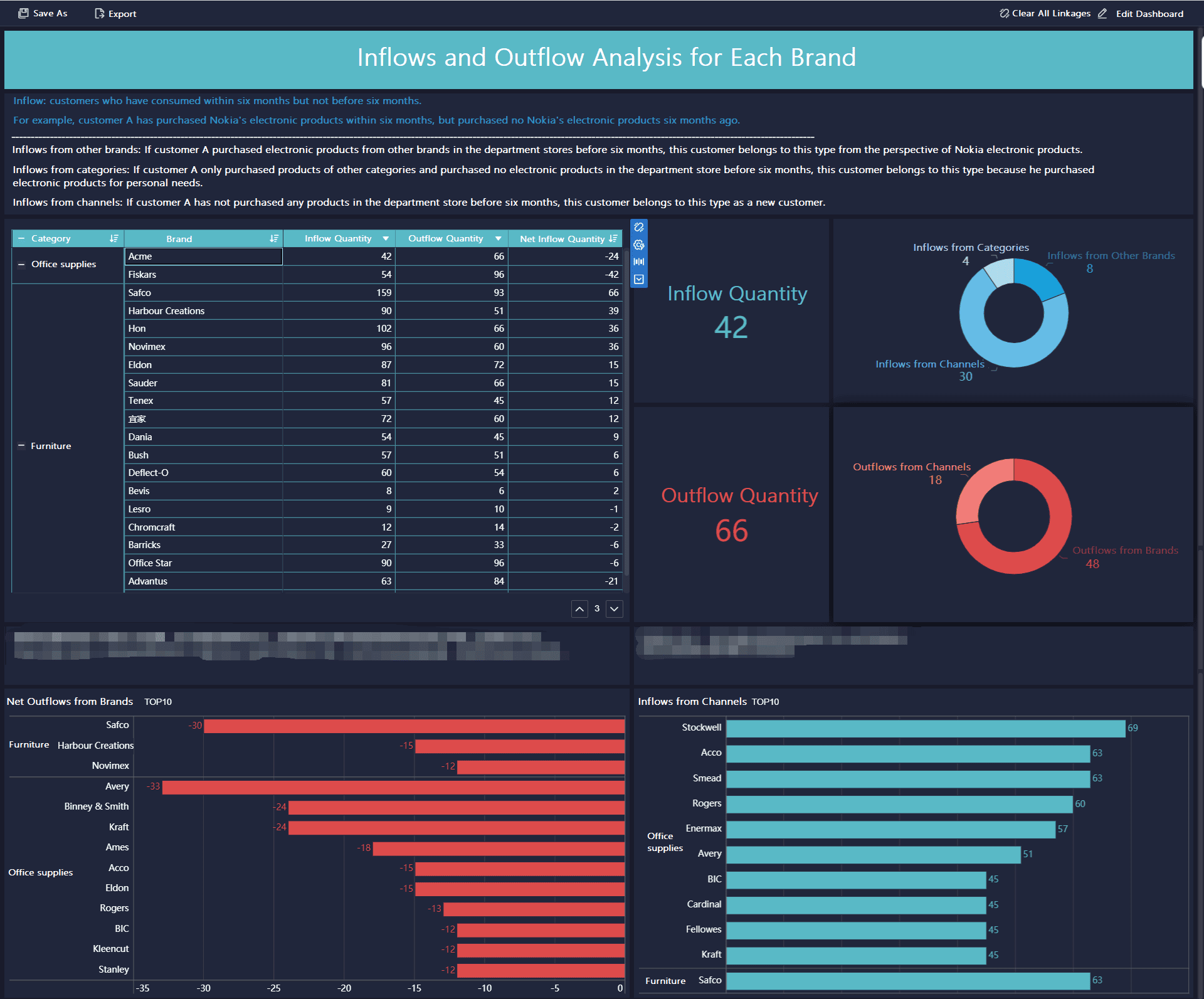
Tracking customer inflow and outflow helps you understand how customers enter and leave your business. Real-time dashboards let you monitor browsing patterns, cart abandonment, and purchase funnels. Marketing dashboards track campaign performance, such as ad clicks and conversions, so you can adjust your strategy to attract more customers.
- Website analytics dashboards show live visit counts, bounce rates, and session durations. These metrics help you see how engaged your customers are.
- Social media dashboards track engagement, reach, and brand mentions. You can respond quickly and optimize your content.
- Key metrics for inflow and outflow include churn and retention rates, customer lifetime value, and performance at each stage of the customer journey.
- Qualitative data, like Voice of Customer feedback, adds context to the numbers.
You can visualize inflow and outflow trends over time to spot patterns. Dashboards often break down inflow and outflow by category, such as source or product line. Integration with ERP systems and automated data collection improves accuracy. Scenario analysis and forecasting features help you plan for changes in customer behavior.
Tip: Segment customers by value tiers and benchmark your results against co\mpetitors to stay ahead.
Challenges and Solutions of Customer Experience Dashboard
Data Silos
You may notice that your customer experience dashboard does not show the full picture. Data silos often cause this problem. These silos happen when different teams or systems keep information separate. Outdated technology, poor communication, and company culture can all create silos. When data stays locked in one place, you get incomplete customer insights. This slows down teamwork and wastes resources.
To solve this, start by identifying which systems hold important customer data. Map out how information flows between your tools. Use integration platforms or middleware to connect systems like POS, HR, and scheduling. For example, a large retailer used middleware to link their systems, which removed manual exports and enabled real-time dashboards. This change led to a 12% drop in labor costs and better customer experiences.
You can also use cloud storage or data lakes to centralize information. Make sure your systems support APIs so they can share data easily. Encourage a culture where teams value data sharing and collaboration. When you break down silos, you gain a 360-degree view of your customer and improve decision-making.
Tip: Centralizing your data helps you spot trends and act on customer needs faster.
Information Overload
When you track many customer metrics, you might feel overwhelmed by too much information. Information overload makes it hard to focus on what matters. You may miss important trends or make mistakes because the dashboard is cluttered.
You can manage this by designing dashboards that show only the most important customer data. Use clear visuals and group related information together. Studies show that simple, well-organized dashboards reduce errors and help you find answers quickly. Set up smart notifications so you only get alerts for urgent issues. This keeps your attention on what really needs action.
Organizational habits also help. Train your team to use digital tools wisely and encourage them to take ownership of the information they share. Use intranets or centralized hubs to store key documents and updates. This reduces scattered emails and keeps everyone on the same page.
Note: A focused dashboard saves time and helps you respond to customer needs with confidence.
Maintaining Relevance
Your business changes over time, so your customer experience dashboard must keep up. If you do not update your dashboard, it may show outdated or useless information. To keep your dashboard relevant, review your metrics often. Make sure they match your current business goals.
Customize dashboards for different roles. For example, sales teams may need different customer data than support teams. Use real-time data integration to provide up-to-date insights. Work with other departments to make sure the dashboard covers all important areas.
Set up regular team meetings to review dashboard trends and discuss solutions. Try new metrics as your products and customer expectations change. Use alerts and automations to catch important changes right away. When you build these habits, your dashboard stays useful and helps you improve customer satisfaction.
Tip: Keep your dashboard fresh by updating it as your business and customer needs evolve.
You gain powerful advantages when you use a customer experience dashboard.
- You see deep insights into customer behavior and preferences.
- You identify pain points and improve customer loyalty.
- You make faster, data-driven decisions that drive business growth.
- You track the right metrics, which helps you act quickly and stay ahead of trends.
Start building your own dashboard with FineBI from FanRuan to unlock these benefits and boost your customer relationships.
Click the banner below to try FineBI for free and empower your enterprise to transform data into productivity!
Continue Reading About Customer Experience Dashboard
How Technology and AI Are Shaping the Future of Retail Customer Experience
FAQ

The Author
Lewis
Senior Data Analyst at FanRuan
Related Articles
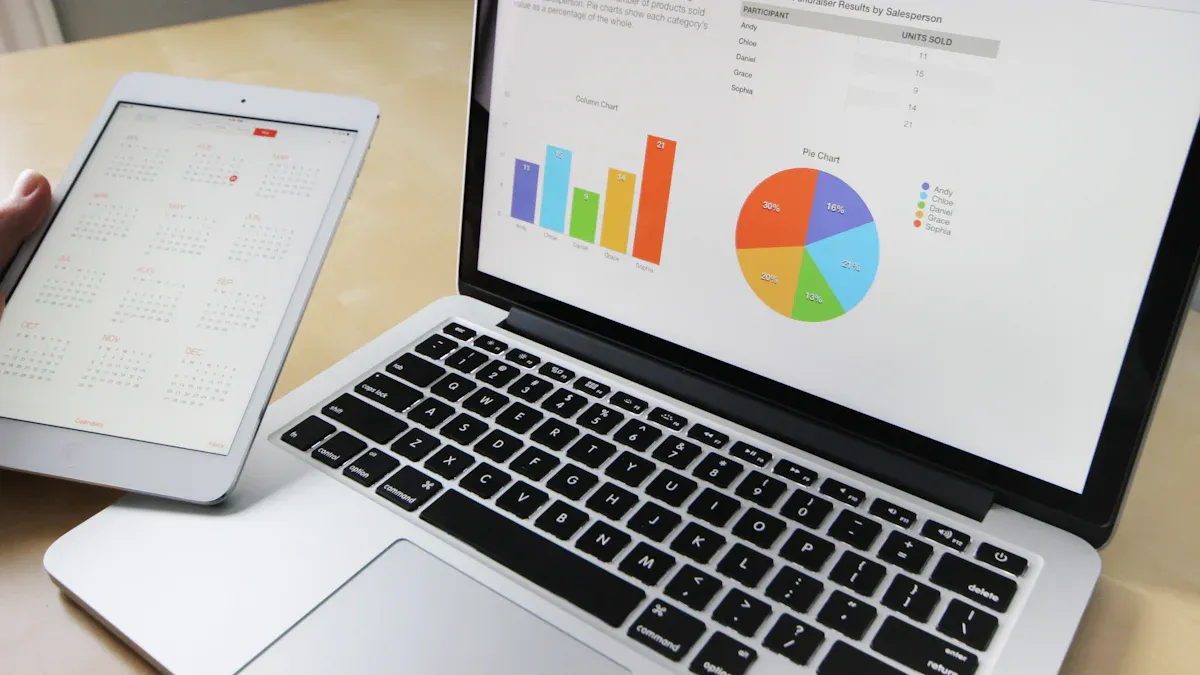
How to choose the best local dashboard for your business
Choose the best dashboard local for your small business with tips on features, integration, security, and mobile access.
Lewis
Dec 28, 2025
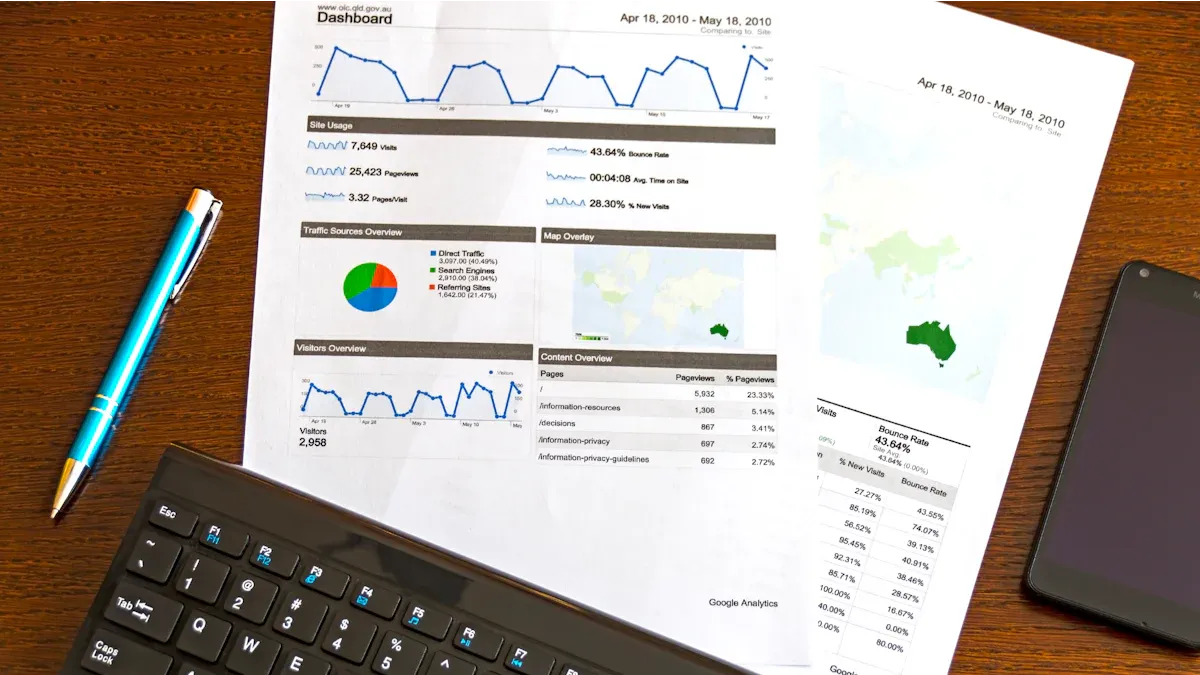
What Is an Enterprise Dashboard and Why Does It Matter in 2026
An enterprise dashboard centralizes real-time business data, enabling faster decisions, improved teamwork, and better outcomes for companies in 2026.
Lewis
Dec 28, 2025

What is the Function Dashboard and How Does it Help you Track Your Health
The function dashboard centralizes your health data, tracks trends, and offers personalized insights to help you manage and improve your well-being.
Lewis
Dec 28, 2025
